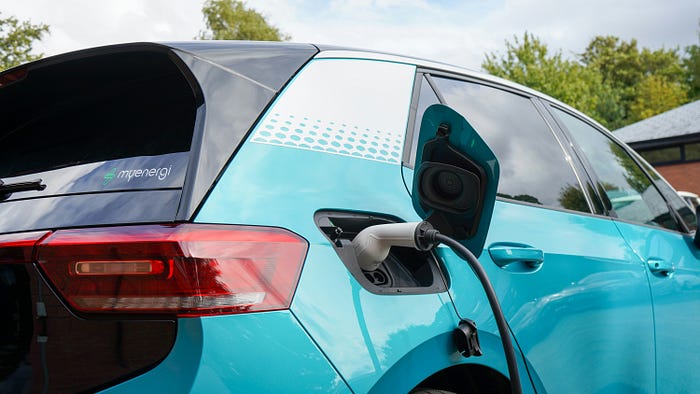# Understanding Electric Vehicle Efficiency: Beyond the Weight Debate
Written on
Chapter 1: The Efficiency of Electrified Vehicles
Electric and hybrid vehicles (EVs and HVs) are often promoted as being more efficient than traditional internal combustion engine (ICE) vehicles. However, it's widely recognized that EVs and HVs tend to be heavier and more complex. This raises an intriguing question: how can these vehicles be both heavier and more economical to operate than their ICE counterparts?
In a previous discussion, I examined the physics of cycling, and the same principles apply to automobiles. In this section, I'll create a basic model demonstrating how mass has a surprisingly limited impact on efficiency. While HVs and EVs may have increased weight, their low energy consumption and ability to recover momentum allow them to travel further on less energy.

Section 1.1: Simplifying the Physics of Vehicle Movement
Understanding the energy needed to propel a vehicle involves considering key resistive forces, such as rolling resistance (related to road conditions, tires, and weight) and aerodynamic drag (influenced by the vehicle's shape). By supplying power to counteract these forces, a vehicle can maintain a steady speed.
For those interested in the mathematics, the fundamental equation of motion can be represented as follows:

Notably, aerodynamic drag escalates significantly with speed. For example, when cruising at highway speeds, aerodynamic resistance overshadows the impact of vehicle weight. Thus, adding a flag to a truck can be more detrimental to mileage than loading it with bricks.

At highway speeds, the difference in mass between the various vehicle trims is minimal. The EV variant may be slightly heavier, but this additional weight requires only a minor increase in energy consumption. This mirrors real-world experiences where adding passengers or cargo does not drastically reduce fuel efficiency.
Section 1.2: Latent Energy Consumption and Efficiency
While cruising energy requirements are comparable across vehicle types, they do not fully explain why electrified vehicles are more efficient than ICEs. Gasoline contains approximately 33.7 kWh of energy per gallon, and under ideal conditions, a Rav4 traveling at 45 MPH could theoretically achieve nearly 200 miles per gallon!
However, we must also consider latent energy consumption. Gasoline engines waste over 60% of the energy derived from fuel as heat, while EVs can harness nearly all the energy provided (though this depends on the source of the electricity).
Latent energy—energy consumed to keep the engine running while idling—can consume up to 0.5 gallons of fuel per hour in ICE vehicles. Conversely, EVs do not experience this waste, and hybrids optimize performance by shutting off the engine at low speeds.

Section 1.3: Regenerative Braking: An Advantage for Electrified Vehicles
Thus far, we've assumed vehicles operate at a constant speed on flat terrain. However, real-world driving involves hills, stops, and starts, where electrified vehicles excel. Although heavier EVs and HVs initially require more energy to accelerate, they can recapture kinetic energy when slowing down.
During braking, the drivetrain reverses, allowing energy to recharge the battery. For instance, Tesla reports that their vehicles can recover up to 70% of kinetic energy through this process, while ICEs lose all kinetic energy as heat.

In simulations involving multiple stops, electrified vehicles demonstrate significant fuel savings thanks to regenerative braking.
Chapter 2: Additional Strategies for Improving Fuel Efficiency
The Truth About Electric Cars Biggest Problem explores the challenges and misconceptions surrounding electric vehicles, shedding light on their efficiency and sustainability.
The Contradictions of Battery Operated Vehicles by Graham Conway addresses various issues facing battery-operated vehicles, providing insights into their performance and efficiency.
Overall, despite their greater weight, electrified vehicles demonstrate superior efficiency, particularly in urban environments. Their design allows for optimal fuel consumption, especially in stop-and-go traffic. As more individuals transition to electric vehicles, the collective benefits are evident in reduced emissions and improved air quality.
In conclusion, while EVs and HVs have environmental impacts due to electricity generation, their full climate benefits will be realized as renewable energy sources become more prevalent. The timeline for this transition relies heavily on political action and public support.